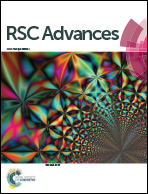Microbial production of phenol via salicylate decarboxylation
Abstract
Phenol, as an important bulk chemical, is the synthetic precursor to polycarbonates, epoxide resins and phenolic resins. Currently, phenol production relies on chemical processes using benzene as the starting material, which are environmentally incompatible and nonrenewable. Here we designed a novel phenol biosynthetic pathway and achieved phenol production from renewable carbon sources in Escherichia coli. A decarboxylase from Klebsiella pneumoniae was over-expressed and purified. In vitro assay was conducted to determine the kinetic parameters toward salicylate. In the bioconversion study, 1154.5 ± 12.0 mg L−1 of phenol was produced from supplemented salicylate. Connecting salicylate decarboxylation with its biosynthesis led to microbial phenol production. Phenol production was improved by enhancing upstream shikimate pathway and modulating gene expression levels. E. coli strain QH4 was a better strain than BW25113 for phenol production. In shake flask experiment the best strain produced 405.6 ± 13.7 mg L−1 of phenol with only trace amount of salicylate left in the culture. Optimization of cultivation conditions further increase phenol titer by 16.4% to 472.1 ± 19.8 mg L−1. This study provides a promising alternative for sustainable production of phenol.


 Please wait while we load your content...
Please wait while we load your content...